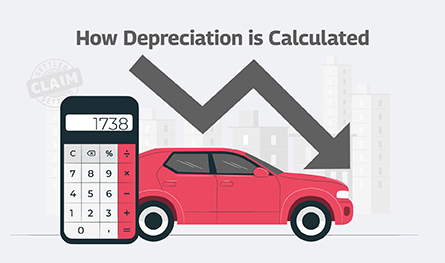Vehicle Number Plate – Things You Should Know About Vehicle Number Plate in India
.png)
A number plate of a vehicle is a metal plate that is fixed to the vehicle and contains the registration number of the vehicle. Let us take a look at the details of a vehicle number plate in this post.
.png)
A ‘number plate’ is a vehicle license plate. The Indian vehicle registration number plate is a metal piece in which the RC or registration number of your vehicle is embossed and the plate is fixed to your vehicle. Though in general the numbers in the number plate look like any random numbering. However, the fact is in India an official number plate contains 4 different sections, each of which has its own particular purpose. We can normally see a number plate on the front and the back of a vehicle, which serves the purpose of identifying a vehicle.
Number Plate Breakdown
So, what are the various parts or sections of a number plate? Here is the format of a vehicle registration plate:
First Part – The first part of a number plate indicates the State/Union territory (UT) where the registration of the vehicle was done. This is represented by two letters such as MH for Maharashtra, GJ for Gujarat, etc. The two letters featured here are the 2 most significant alphabets picked from the state name.
Second Part – The next 2 digits talk about the sequential number of the District. All states in India have districts and each of the districts has its own RTO or Regional Transport Office, which takes care of vehicle registrations.
Third Part – In the third part of your vehicle license plate, you get a unique number so that identifying your particular vehicle becomes easy. In case of unavailability of a number, letters are used to replace the last digits. This particular number serves as the surplus number specifically given for your vehicle. People even buy customized numbers for their vehicle by paying a premium price.
Fourth Part – The fourth part is the last part of the number plate. This part has a logo of oval shape with ‘IND’ written on it, which is the acronym for India. It also has a chromium hologram in the shape of a Chakra on top, which is mostly used in HSRPs or High-Security Registration Plates. Also, in 2005 tamper-proof plates were introduced to limit the theft of vehicles.
So, all the above-mentioned unique codes give a unique identification to your vehicle.
Registration Process of Vehicle in India
Registration (RC) is one of the most important and mandatory steps to undertake just after buying a vehicle. So, once you buy a new car or any other vehicle, your vehicle dealer issues you a temporary vehicle number called TR or ‘To Register’. This temporary number remains valid only for a short duration of one month and hence, the vehicle owner has to apply for the permanent RC number within this one month duration by visiting the district RTO office. Once they get the standard license plate, it will be verified by the RTO motor vehicle inspector.
During the time when you are waiting for your vehicle to be registered, it is advisable not to drive the car on the road as it may levy heavy fines.
The registration process of your vehicle at the RTO would include authentication of the new vehicle as well as the verification of your address among others. Further, the inspector at the RTO would check details like chassis and engine numbers too.
Remember to carry all important documents such as sales invoice, PUC, DL etc. at the time of vehicle registration. For registration of commercial vehicles, you also need documents like certificates of roadworthiness, transportation permits etc. The license number of your vehicle stays active for over 20 years.
How to get Custom Vehicle Number Plates?
Custom numbers can be opted for if you want to make your car stand out with codes like 5555 or 2222 etc. However, buying single numbers like 3, 7 etc. is difficult as they are used mainly for government vehicles.
Sometimes there is a sale of these ‘lucky numbers’, which can be bought at prices as high as INR 3 lakh and beyond. RTOs generally hold auctions for such numbers in some states. The information regarding the same is available at the website of your state RTOs.
Can I opt for Custom Font?
It is important to make sure that the font you use for your car number plate should be clearly visible from a distance or else you might end up being in trouble on the road by the traffic police. Hence, avoid using fancy fonts for your car number plate which are not readable, as it is regarded as an offense. So, if you prefer using a custom font, try to use clear bold letters.
Format Variations
In the case of some Indian states, they generally prefer to use a unique format. Here, the initial ‘zero’ of the district court is removed and is substituted with a category letter to denote the particular category of the vehicle. For example, take a look at the list below,
- C is used for cars & SUVs,
- S is used for two-wheelers,
- E is used for electric vehicles,
- P is used for passenger vehicles, like bus
- R is used for three-wheeler rickshaws,
- T is used for vehicles with tourist license,
- V is used for pick-up trucks and vans,
- Y is used for vehicles that are open to hire,
What Do You Know about the Unique Colours of Number Plates?
You may have seen some vehicles on the road with number plates of different colour combinations. Do you know what they signify? Read here;
- White – If the number plate is white in colour and the text is written in black, it means that the vehicle is a private car and it cannot be used commercially.
- Yellow – If the number plate is yellow with black text, it implies commercial vehicles like taxis, trucks etc., which need special permits by the driver to drive the vehicle.
- Blue – A blue number plate in India implies that the vehicles are used by foreign delegates. These number plates have text written in white. Here, the country code replaces the state code in the plate.
- Black – If the car no. plate is Black and the text is yellow, it means that the vehicle is commercial owned by a private owner. Maybe the owner has rented out the vehicle for commercial purposes. In this case, you do not require a commercial driving permit to drive the car.
- Red – If the number plate is Red, the vehicle is used to drive the President of India or any of the different State Governors. Here, the license number is replaced with India’s Emblem embossed in gold.
- Upward arrow – If the vehicle is a military car, it follows a unique system. Here, a broad arrow is used as a prefix for the number. Also, the state code is replaced with digits that portray the year of purchase of the vehicle. The military vehicles are not registered at the RTO but with the Defence Ministry in New Delhi.
Vehicle Number Plates in India
The Vehicle number plate contains the registration number of the vehicle and it is issued by the district RTOs.
It is a metal plate which is fixed to a vehicle and contains the official registration number of a vehicle on it.
There are four parts in a number plate in India.
The vehicle registration number is the number issued to your car by the district-level RTO of your respective state.

Author Bio
Paybima Team
Paybima is an Indian insurance aggregator on a mission to make insurance simple for people. Paybima is the Digital arm of the already established and trusted Mahindra Insurance Brokers Ltd., a reputed name in the insurance broking industry with 21 years of experience. Paybima promises you the easy-to-access online platform to buy insurance policies, and also extend their unrelented assistance with all your policy related queries and services.
Other Motor Insurance Products
Latest Post
.jpg)
Having a bike is not just about convenience, it’s a huge responsibility. Financial protection of your two-wheeler is important and the best way to ensure that is to have a bike insurance policy that will protect you in case of an accident, theft or a natural calamity. There are so many options when it comes to policies, making it difficult to know what’s best. This guide makes it easier to choose the best bike insurance policy that is suitable for you.


Non-linked, non-participating term plans are the ones that do not participate in the business and profit of the insurance company. These are fixed premium plans where the policyholder pays a fixed amount to ascertain a guaranteed sum as a return to be paid to the nominee in case of his/ her demise. Let’s learn more in this post.


Car depreciation implies the difference between the cost of a car at the time of buying the car and when you sell it. A car insurance claim amount is determined by the car depreciation rate. The car depreciation rate is the reduction in the value of your car over its lifespan caused by wear and tear.


Have you ever caught yourself lost in illusions about your daughter's future events, such as her university convocation and first day at work? Her university convocation. When she embarks upon her initial job after graduation will be the day.

.png)
Accidents can happen anywhere, anytime, by your own fault or another person. What’s important is to be prepared for such mishaps. This is where Own Damage Car Insurance comes in handy.




